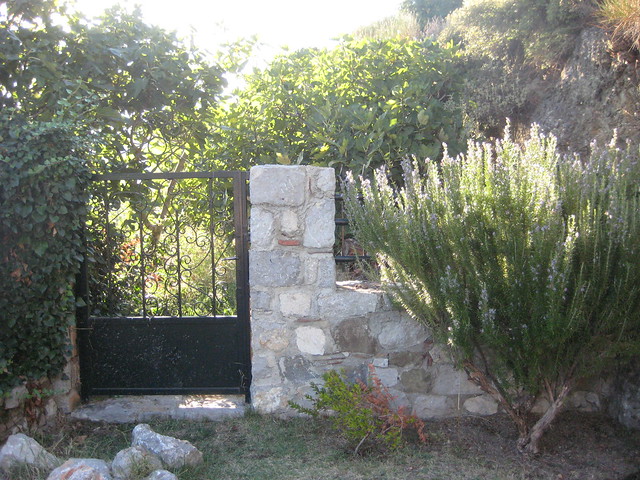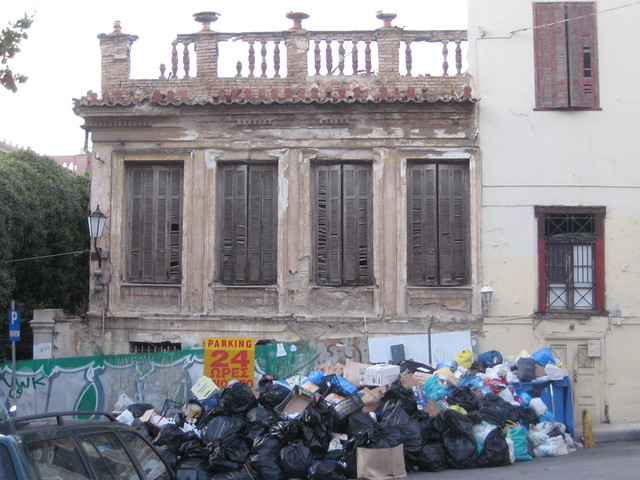
In mid-October I went to Athens, Greece for about a week. I was attending an English teacher's workshop followed by an educational leadership conference. I'll skip the details, but it was a valuable learning experience and I came back to my school with several new ideas and approaches that will improve my practice.
While I was there the public works employees went on strike. Garbage was piled up around the city and the hosts of the conference repeatedly apologized for the mess and the smell. My colleague from Cairo and I had to laugh, because we had commented while walking around the day before that the garbage piles were so neat and organized here compare to Cairo where it is often strewn about the road side and burning in the medians.
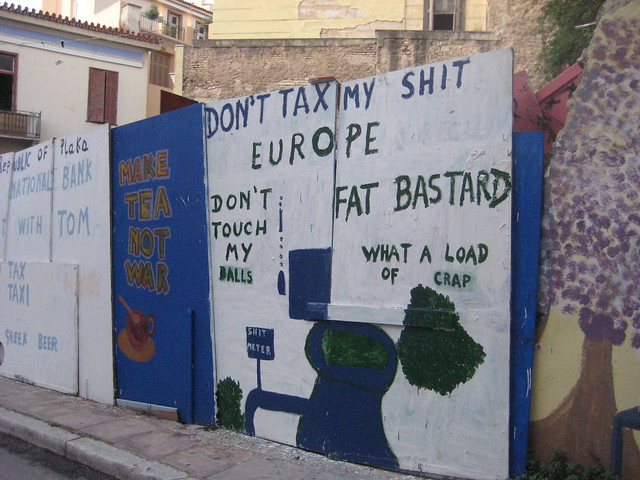
Graffiti like this was painted all around the city
Our hotel was centrally located, only a few blocks from the Syntagma Square, and from the roof top restaurant we had a spectacular view of one of Athens' seven hills, Mount Lycabettus and the Arch of Hadrian. I ran up to the top of Mount Lycabettus, which looks more impressive than it really is. The first time I did it my GPS calculated 2 miles from the hotel's front door to the monastery at the top. The second time I ran up I found a more direct route and it was only 1.5 miles. Regardless, it was still a treat to be 1) running in shorts in a city and not feel like I was the equivalent of an adult film star and 2) to be climbing up through green space within 10 minutes from my front door.

View from hotel rooftop at night

A photo of the Acropolis from the monastery atop Mt. Lycabettus
Day Trip to Delphi
The conference organizers arranged a full day trip to Delphi (pronounced DEL- phee). We set out for a 3 hours bus ride from Athens with a guide who has a PhD in linguistics and was the most knowledgeable guide I have ever had. The countryside we drove through reminded me of Tbilisi, Georgia. It was quite raw and rugged terrain, but lush and green at the same time. I did not know that Greece produced cotton. The photo below is of a cotton field with snow-capped mountains in the background.
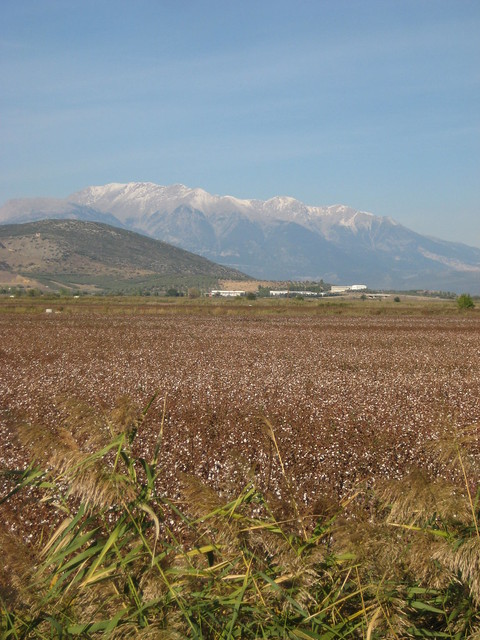
Our first stop was the museum at Delphi where exhibits showed the artifacts discovered while excavating the Temple to Apollo on this site. During the height of its use Delphi had a market place, a stadium for athletic competitions, the Temple to Apollo, the Oracle at Delphi and an Athenian Treasury.
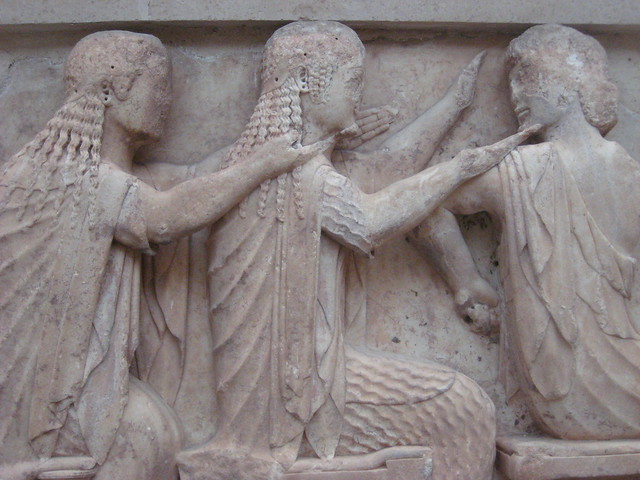
An frieze depicting Aphrodite, Artemis and Zeus overseeing the Trojan War
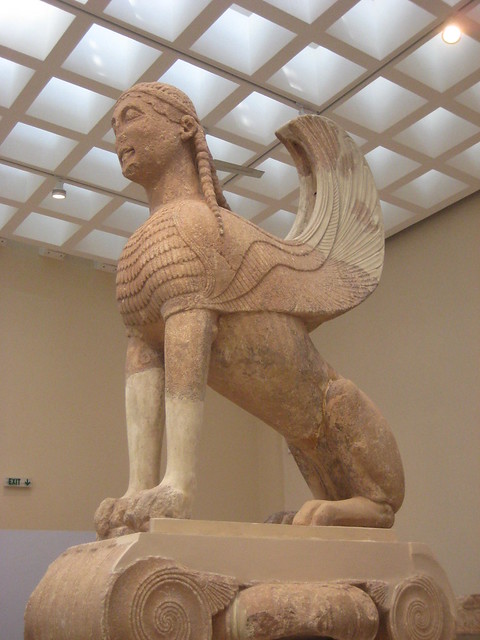
A Sphinx that sat atop a pillar before the Oracle at Delphi
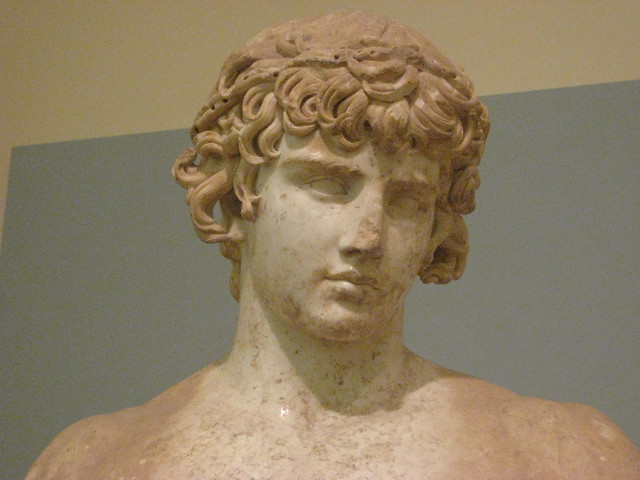
Statue of Antinoos, beloved companion of Emperor Hadrian, who had barely reached adulthood when he drowned in the Nile.
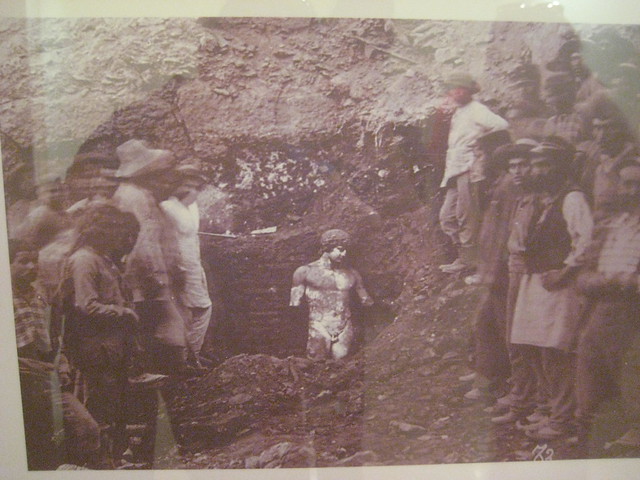
A photo of the photo of the excavation that found the statue of Antinoos.

The view outside the museum
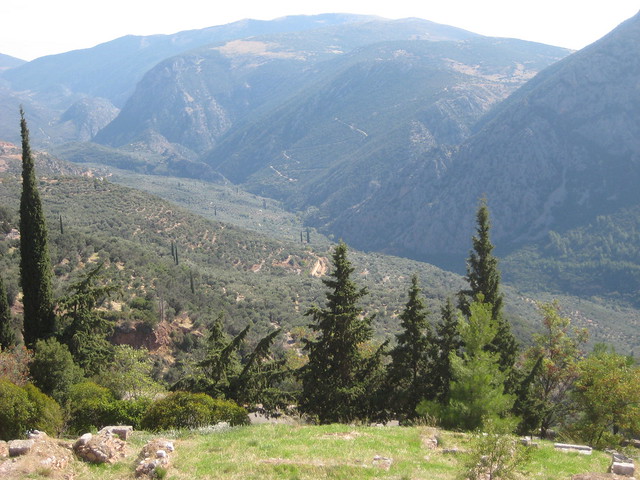
Olive groves in the valley below
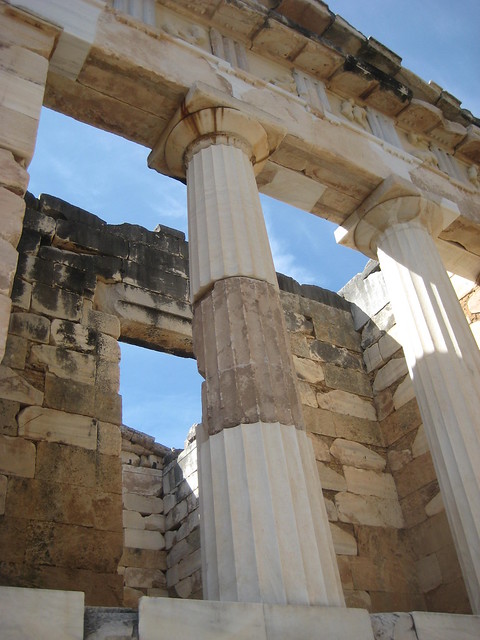
The Treasury of the Athenians

The Treasury of the Athenians was a store house for donations made by citizens of this city. These donations went to the Temple of Apollo and the upkeep of Delphi, ensuring that any Athenian who came to worship would be moved straight to the front of the line and given preferential treatment.

The photo above is of a wall at the base of the Temple to Apollo that served as a running record of events at Delphi. Think of it as a precursor to the newspaper. The photo below is a close up of one of the stones. You can see how they carved the words to relay the news:

The Stadium at Delphi
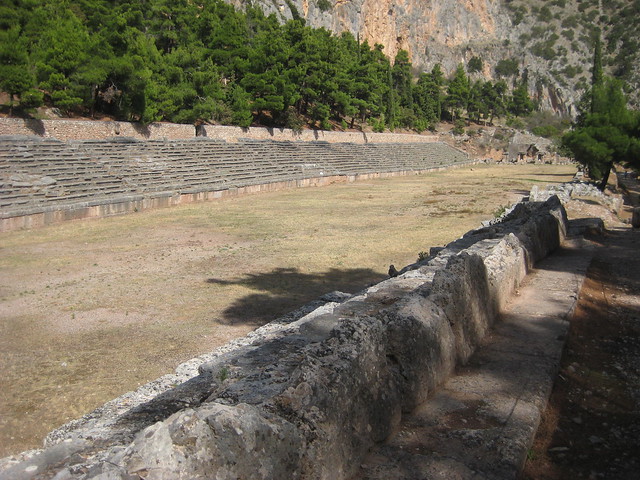
The stadium at Delphi hosted the athletic contests of the Pythian religious festival. The Pan-Hellanic Pythian Games were second only to the Olympic Games.

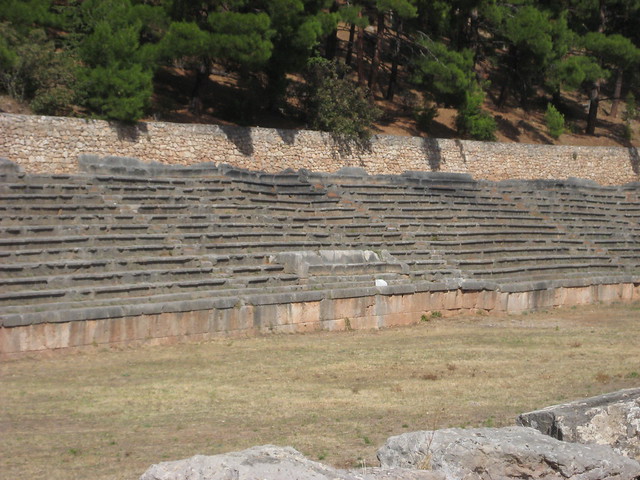
Notice the judges seats in the center of this photo, they are the only ones with seat backs.
The Temple to Apollo
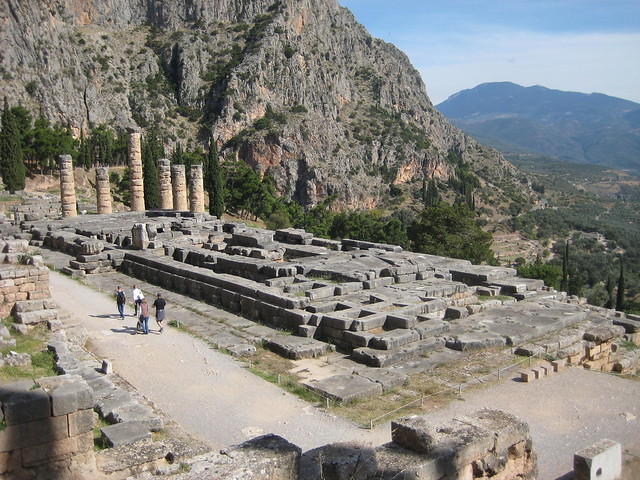
The remains of the Temple to Apollo
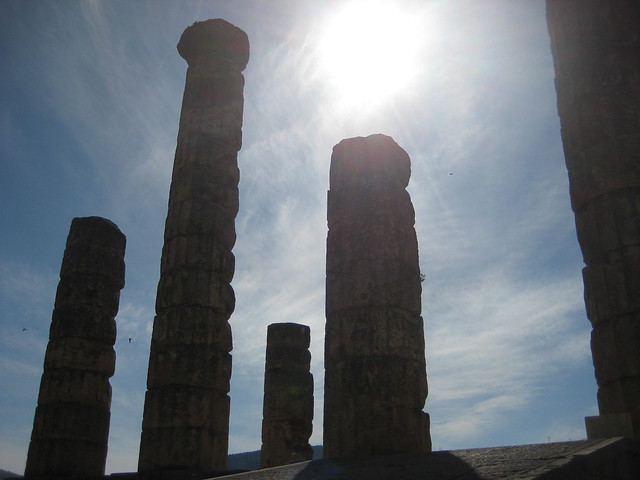
I did not realize, until visiting Delphi, that the Oracle was located underground beneath the Temple to Apollo. There was, reportedly, a chasm that would emit vapors that the Oracle would inhale and enter a trance like state and begin uttering unintelligible phrases that the priests would translate into prophecies.
Monastery Visit
After leaving Delphi we made our way back to Athens with a stop at a monastery. The grounds of this monastery were truly beautiful and peaceful. The plants were remarkable. One of the things I noticed in Athens, as well as this monastery, was that herbs were used as decoration as well as for cooking. Huge pots of basil, thyme, oregano and rosemary were planted throughout the city. I noticed the same here.
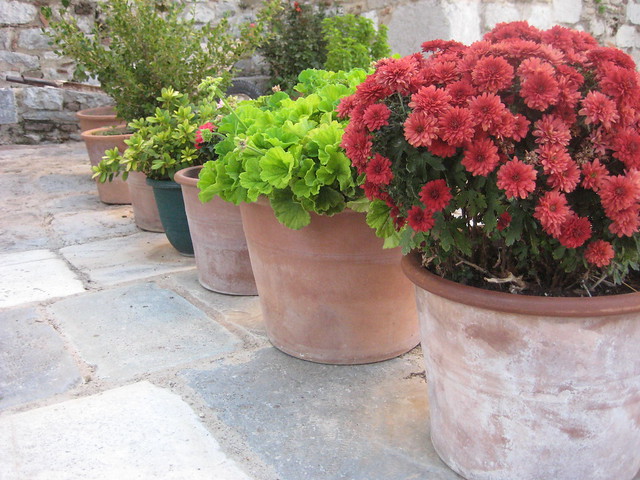
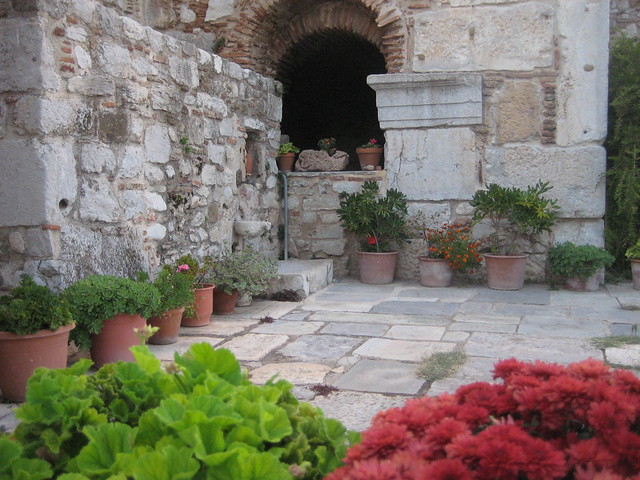
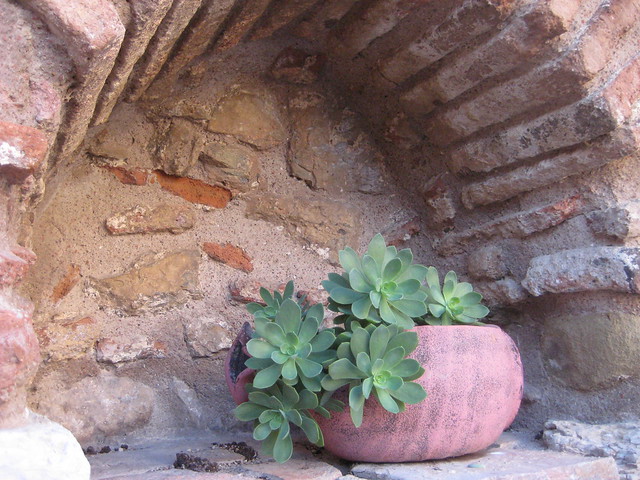
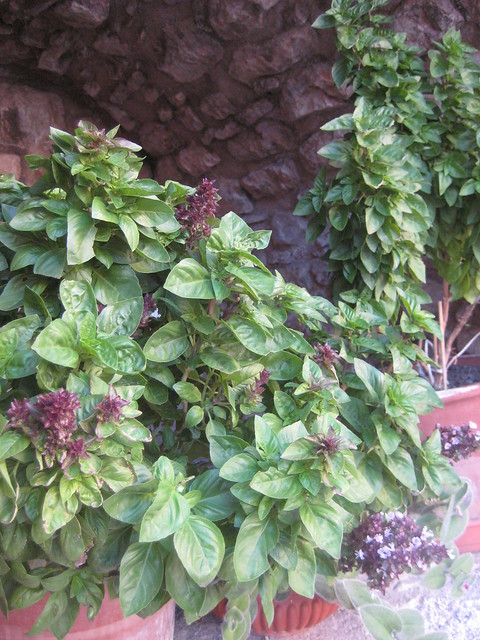
Basil
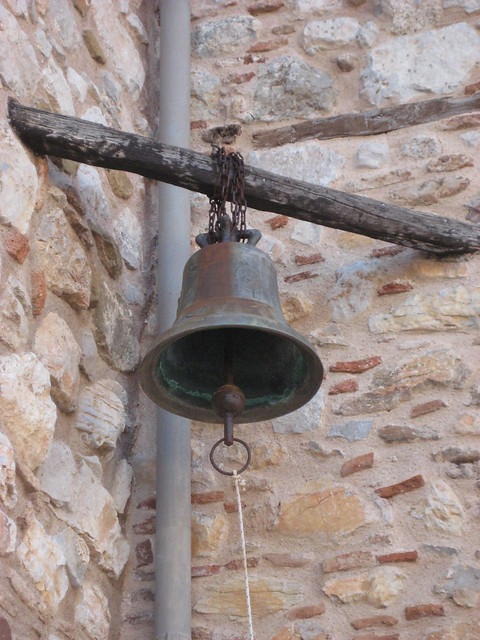

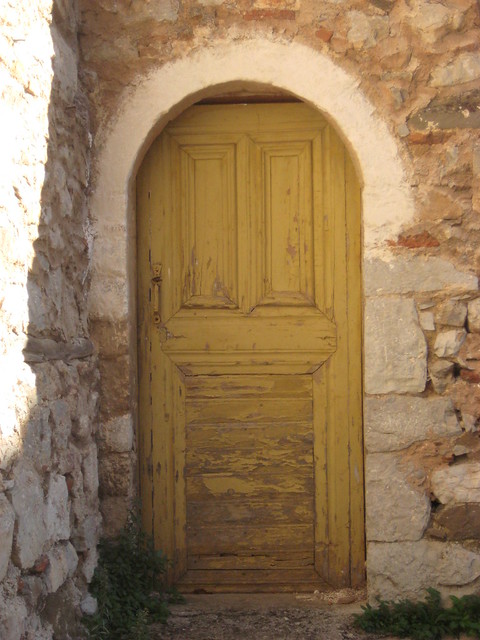
Inside the various churches were rows of chairs like those pictured below:

When you look closely you notice that each seat has a hinge in the center which enables the seat to be folded in half and raised like this:

I was unable to find an answer as to why these seats folded and how they would be used. It seems like a clever booster seat to me.
As I was making my way back tot he bus I took a detour along a side path, which led to a smaller church. Behind this church was a natural spring that had been tapped coming out of the rock wall in the hill side and the small gate pictured below. That is an enormous rosemary bush with purple flowers beside it.
